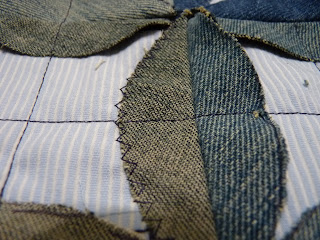I am now five days past my due date. Still no labor signs. Just waiting. Maybe God knew I needed the extra time because I just found out yesterday that my cloth diapering system was not quite ready.
Aside from the fact that I've never had a BABY before, cloth diapering feels the most foreign to me as I prepare for my new role as a mom. I have diapered dozens of babies over the course of my big-sister and babysitting career. However, none of these babies were ever cloth diapered.
At first, the world of cloth diapering seemed really complicated. So, I did my research (thank you, internet!) and asked questions. I watched a lot of YouTube videos (try "Cloth Diapering 101") and visited a lot of websites (
pinstripesandpolkadots.com is amazing!). I've even joined a couple of cloth diapering Facebook groups to glean tips from the other cloth diapering moms of the world.
Cloth diapers appeal to me for several reasons. I like the fact that we will be generating a lot less garbage by using and reusing cloth. It's nice to know that we will never "run out" of diapers unexpectedly and have to make a mad dash to a store (unless I get behind with the laundry!). I also like that children in cloth diapers tend to suffer less diaper rash and potty train earlier.
The best part about cloth diapering is the money factor. Cloth diapering is going to be cheaper than disposables for any family, but for us, it's practically free! I received
all of the covers, prefolds, inserts, wet bags, and liners we could ever need as gifts or loans. One of my cousins finished cloth diapering her daughter a few years ago and
gave me her entire stash. A close friend has a two-year old in cloth diapers, but is letting me use her infant-size covers while Jadon is small. Even several guests at my baby showers gave me cotton prefolds, knowing that I wanted to do cloth diapering.
All of these items currently sit proudly on my "changing table" (a desk my husband found on the side of the road) in neat little stacks. I like to walk in the room and admire how neat and organized and
ready everything is.
 |
| All organized and clean...until Jadon gets here. |
But then, earlier this week, I remembered that I have to wash all the prefold diapers prior to using them. Otherwise, they won't become quilted and absorbent. Having done my research, I faithfully ran all my prefolds through five hot wash cycles with detergent, and then through one more rinse. I transferred them to the dryer and eagerly waited to pull out the fluffy, warm, quilted prefolds that I had seen in the YouTube videos.
All 27 prefolds came out of the dryer warm, but only five were fluffy and quilted. The rest were frayed and gauze-like. What happened? Had I messed this up already?
 |
All the fraying prompted me to reinforce the fabric layers with a zig-zag stitch.
The material looked and felt like it was falling apart! |
As it turns out, most of my well-meaning baby shower guests had purchased prefolded diapers that are not "DSQ" (diaper service quality). They look a lot like the absorbent, cotton version that I need, but really are only intended for use as burp cloths and other little baby messes. I didn't even know to look for DSQ prefolds before.
So, yesterday, I bought the DSQ prefolds we need and went through the whole washing routine again. In fact, since we got home really late from visiting with friends, I stayed up until 1 am this morning to run all the cycles. There really was no need to stay up so late...I'll just blame the nesting instinct (I
need to be ready!). I am
much happier with what came out of the dryer this time.
 |
| Much better! No fraying, and the layers got all nice and fluffy, just like they are supposed to. |
Just look at the difference between the gauze-y prefolds and the DSQ prefolds. The diaper on the left looks flat. You can practically see through the side panels where there are not as many layers of fabric. The diaper on the right looks thick and plush (and it is!).


 |
| On the left, one dozen gauze-y prefolds. On the right, one dozen DSQ prefolds. What a difference! |
So, now I feel ready again. Let the cloth diapering adventures begin. But I also have all these extra burp cloths. Maybe I'll embroider some cute burp cloth sets to give away as baby gifts. Or maybe Jadon is going to be a really messy burper and I'm going to actually need all of these.
Thank you, Jadon, for waiting for Mommy to wash the diapers. She wants everything to be ready for your precious little butt.



























 ...
...























